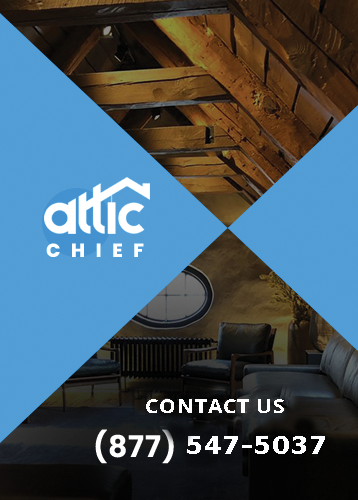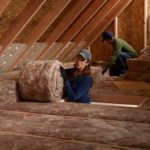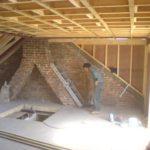Blown-In Insulation vs. Traditional Insulation: Which is Better?
When it comes to home insulation, homeowners face an essential choice: blown-in or traditional insulation. Both options promise to increase a home’s energy efficiency. However, the right choice depends on various factors, including cost, the installation process, and effectiveness in different spaces.
The decision comes down to your specific needs when considering Downey blown in insulation versus traditional insulation. It is cost-effective ($0.70 to $1.10 per square foot) and excels in energy efficiency, perfect for attics and wall cavities. While slightly pricier, traditional insulation ($1.00 to $1.40 per square foot) may be preferable for larger spaces such as basements.
In this article, we’ll compare blown-in insulation to traditional insulation, discuss the pros and cons, and help you make an informed decision.
Blown-In Insulation
Blown-in insulation is a modern and innovative method of insulating walls, attics, and floors by blowing or spraying insulation material, unlike traditional insulation, which consists of bulky fabrics. Downey blown-in insulation offers flexibility and comprehensive coverage, ensuring every nook and cranny is insulated. This type of insulation is particularly effective for hard-to-reach areas and around obstacles, contributing to its rising popularity among homeowners.
At Attic Chief, we specialize in providing top-quality blown-in insulation services. Our expert team utilizes advanced techniques and high-grade materials to deliver superior insulation, significantly improving your home’s energy efficiency. Choosing blown-in insulation from Attic Chief means optimizing your home’s thermal performance, reducing energy costs, and creating a comfortable indoor environment year-round.
Advantages
Its comprehensive coverage creates a tight seal, preventing warm air from escaping in winter and cool air in summer. This reduces the load on your heating and cooling systems. The installation process is straightforward and less disruptive, typically completed by a professional team within a day.
It involves using a particular machine to blow insulation material into targeted areas, thereby minimizing the need for invasive home modifications. Cost-effectiveness is yet another advantage. Although the initial investment may be higher, the substantial savings on energy bills over time translate to a lower lifetime cost than traditional insulation.
Disadvantages
Despite its numerous benefits, blown-in insulation has drawbacks. Over time, insulation material can settle, reducing its thickness and insulating properties. This can create energy inefficiencies and require maintenance or additional insulation to maintain optimal performance.
Furthermore, it may be less effective in specific spaces, such as vast, open areas where the loose-fill material can disperse. In such spaces, it may require a combination with other insulation types. Therefore, understanding its limitations is crucial to maximizing its benefits.
Traditional Insulation
Traditional insulation, also known as batt or roll insulation, is a conventional method of home insulation. It is primarily composed of mineral fibers such as fiberglass or rock wool and is typically available in pre-cut panels or rolls, making it suitable for installation between studs, joists, and beams.
While it could be a more economical choice upfront, traditional insulation may offer a different seamless coverage than blown-in insulation, potentially leaving gaps. It is important to note that the effectiveness of this type of insulation heavily depends on its proper installation, which can be more labor-intensive.
Advantages
When installed correctly, traditional insulation has a significant advantage in terms of longevity. It can last for decades without needing replacement, making it a viable long-term investment for homeowners. Moreover, depending on the material and thickness, it often has a higher R-value, providing superior heat flow resistance and enhancing your home’s energy efficiency.
Finally, traditional insulation is better suited for more extensive, open spaces. The structured form of batts or rolls fits well into expansive areas, ensuring comprehensive coverage. This characteristic makes it preferred for spaces like basements or large attics.
Disadvantages
Like any insulation, traditional insulation has some downsides. One of the primary drawbacks is the labor-intensive and complex installation process. Unlike blown-in insulation, traditional insulation often requires manual fitting into spaces, which can be time-consuming and requires professional expertise to minimize gaps.
Additionally, traditional insulation can be more expensive in the long run. Despite lower upfront costs, blown-in insulation can become more costly in the long run due to poor coverage, energy inefficiencies, and the need for periodic maintenance or insulation replacements. Therefore, homeowners must weigh these factors before deciding on the appropriate insulation.
Comparison
Cost is crucial when comparing blown-in insulation to traditional insulation. This comparison will focus on the initial costs, long-term expenses, and potential savings each insulation method offers. Understanding these factors can help homeowners decide on the best Downey blown-in insulation.
Cost Comparison
Blow-in insulation is affordable, with material costs ranging from $0.40 to $0.60 per square foot. This type of insulation involves blowing loose fibers or particles into the desired space. Labor costs typically range from $0.30 to $0.50 per square foot. The total cost for blow-in insulation is $0.70 to $1.10 per square foot, including materials and labor.
In contrast, traditional insulation is slightly pricier. Material costs range from $0.60 to $0.80 per square foot for pre-cut batts or rolls made from fiberglass or mineral wool. Labor costs range from $0.40 to $0.60 per square foot. Combining material and labor costs, traditional insulation costs $1.00 to $1.40 per square foot.
Energy Efficiency Comparison
Blown-in insulation is highly energy efficient due to its comprehensive and seamless coverage, mitigating energy transfer and reducing heating and cooling costs. The effectiveness of traditional insulation hinges on its installation quality, and any gaps can compromise its performance.
However, when appropriately installed, high-quality traditional insulation can deliver robust heat flow resistance. Both options offer energy-saving potential, but blown-in insulation has the advantage of its comprehensive coverage and superior sealing capabilities.
Installation Process Comparison
The installation process for Downey blown-in insulation is relatively efficient and less invasive. A machine distributes the material evenly across the desired areas, requiring less manual labor and allowing for quicker completion.
Traditional insulation requires more time to install because it needs to be meticulously manual for full coverage. The choice depends on homeowners’ preferences for faster installation or potentially higher energy efficiency.
Effectiveness in Different Spaces
The effectiveness of Downey blown-in insulation varies significantly based on the specific space in your home. Let’s break down how each type of insulation performs in different areas:
| Spaces | Blown-In Insulation | Traditional Insulation |
| Attics | Highly effective due to their ability to fill in all nooks and crannies, providing a comprehensive heat barrier. | It can be effective, but manual installation can leave gaps, reducing effectiveness. |
| Wall Cavities | Offers excellent sealing for wall cavities, reducing heat transfer effectively. | It may not fit snugly into wall cavities, reducing its insulating effectiveness. |
| Basements | May not be ideal due to the possibility of material dispersal in large, open spaces. | It is more suitable due to its structured form, providing comprehensive coverage. |
| Crawl Spaces | Can effectively cover all areas in crawl spaces, providing superior insulation. | It may leave gaps due to manual fitting, reducing its effectiveness. |
Considering your home’s existing condition and specific needs is crucial before deciding on the type of insulation. For more personalized advice, don’t hesitate to contact us at 877-547-5037.
Conclusion
Both traditional and blown-in insulation have unique advantages and disadvantages. The choice between them depends on factors like budget, the specific spaces to insulate, and energy efficiency goals.
While blown-in insulation offers superior sealing and greater energy efficiency, traditional insulation may be more suited for larger rooms. Understanding these nuances will help you decide what best suits your insulation needs and enhances your home’s comfort and energy efficiency.




